One Impossibly Enjoyable Conversation
with Richard Michelson Before Breakfast
 October 19th, 2010 by jules
October 19th, 2010 by jules

— From Richard Michelson’s Busing Brewster,
illustrated by R.G. Roth (Knopf, May 2010)
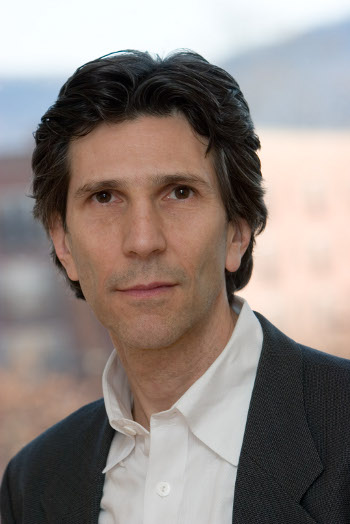 It’s a pleasure to welcome Richard Michelson to 7-Imp today. I don’t want to belabor this introduction, since I think this interview is full of all kinds of goodness and I want you to get right to Rich’s words, but for those who might need it, I offer a Rich Michelson 101:
It’s a pleasure to welcome Richard Michelson to 7-Imp today. I don’t want to belabor this introduction, since I think this interview is full of all kinds of goodness and I want you to get right to Rich’s words, but for those who might need it, I offer a Rich Michelson 101:
Rich is a poet and children’s book author, whose books have received many honors, including the prestigious Sydney Taylor Book Award (Gold Medal) in 2009 for the stirring As Good As Anybody: Abraham Joshua Heschel and Martin Luther King’s Amazing March Towards Freedom, illustrated by Raul Colón. Clemson University named Michelson the R. J. Calhoun Distinguished Reader in American Literature for 2008. Rich has worked with a whole slew, to be precise, of talented illustrators — not only in his well-crafted picture-book writing and poetry work, but also as the owner of R. Michelson Galleries in Northampton, Massachusetts, a most wonderful-looking visual arts space I long to visit myself. It is in this space that Rich champions and showcases the work of many of today’s contemporary picture book illustrators (as well as the work of those who have passed).
Opening this post is a spread from Rich’s latest title, Busing Brewster, illustrated by R.G. Roth and released by Knopf Books in May of this year. The book, Publishers Weekly writes, “provides an immediate, child’s-eye view of court-ordered busing in the 1970s…Using soft earth tones, Roth’s…stylized mixed media images are an amalgam of angular characters, geometric shapes, and patterned fabrics that feel like an artful interpretation of the era’s cartoons. They readily underscore the collision of innocence and prejudice, anger and hope.” I asked Rich a bit more about this title in the interview below, and to those of you not familiar with his previous titles, I encourage you to check out this page at his site which features his works for children thus far.
This interview does lots of things, I think, but I’m particularly happy about the fact that it (and Rich) celebrates the art of the picture book. Since that is what I try my absolute darnedest to do here at 7-Imp, I think Rich is just about the perfect visitor and I have been a long-time fan of his work, which explores—in his words below—“the complex ways we socialize and politicize our children.” So, without further ado, I welcome Rich and thank him for taking the time in his busy schedule to stop by.
 7-Imp: Tell me about the genesis of this book. I know authors might loathe being asked about “inspiration,” but what made you want to tell this story? You say in an author’s note that you wrote this before Obama took Office. Can you talk a bit about how gratifying it must have been when that happened, in light of the story you wrote?
7-Imp: Tell me about the genesis of this book. I know authors might loathe being asked about “inspiration,” but what made you want to tell this story? You say in an author’s note that you wrote this before Obama took Office. Can you talk a bit about how gratifying it must have been when that happened, in light of the story you wrote?
Rich: I am both a mid-list author (therefore grateful to be given any attention whatsoever) and Jewish (questions are our stock in trade. Nu?), so I don’t loathe being asked anything. Though it is true that I come down on the side of hard work and curiosity, and I am not often visited by the gods of Inspiration.
Busing Brewster is based on the story of many young African-American children in the 1970s, who were bused to previously-segregated all white schools. A few years ago, I was reading the newspaper and I came across an interview with a successful politician who, as a child, had been bused from his home in a black neighborhood to a school in the white section of the city. He attributed many of his achievements to the opportunities busing had afforded him, yet he insisted that his triumphs were not worth the trauma he had suffered as a child.
I am always interested in the complex ways we socialize and politicize our children, and many of my books deal with racial issues, so I began thinking about the well-intentioned, but failed, experiment of forced busing and what it must have felt like for the 6- and 7-year olds, who were already negotiating the more usual complications of starting school and “fitting in.”
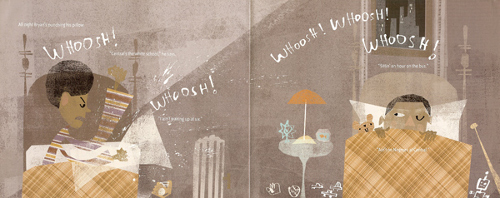
So, Busing Brewster became a story about dealing with bullies and the prejudices of others while trying to make new friends. This is as relevant to every child’s life today as it was to Brewster and Bryan and Freckle-face. It is also a story about the difference that a teacher or librarian or parent can make in a child’s life. The larger historical context of busing and segregation is my background canvas and something children will come to understand as they re-read the book — or encounter the subject in other older texts.
While I imagined Brewster as wanting to grow up to be President, it never occurred to me, while writing the book (in 2003, well before I’d heard the name Obama), that this could happen in my lifetime, not to mention prior to publication. My characters, especially Brewster’s mother and Miss O’Grady, the librarian, had much more faith and optimism than I had. How nice that they proved their author wrong.

7-Imp: Had you worked with R.G. Roth before? If not, what was it like to see his illustrations for this story for the first time?
Rich: Honestly, it was disorienting. I admit that I had pictured the story in a more realistic manner, similar to E.B. Lewis’s work on my books Across the Alley and Happy Feet. So, when I saw Rob’s interpretation it took me a few moments (days) to readjust, and now I can’t envision the book any other way.
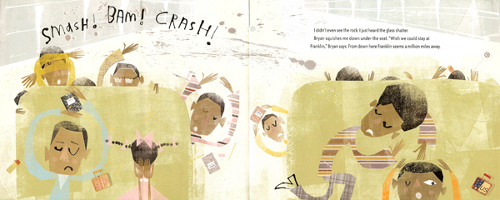
That is the wonder of collaboration. When it works, the illustrator does not simply illustrate the words or follow the author’s instructions. They bring their own vision to the project. For a book to rise, the whole needs to be greater than the sum of the parts.
I’ve had the good fortune of collaborating with some of my closest friends who, lucky for me, also tend to be among the country’s most accomplished illustrators (E.B., Raul Colón, Mary Azarian, Leonard Baskin, Barry Moser), but it is the publisher who chooses the illustrator. I had not worked with Rob before, nor met him, which is rare for me, considering my “day job.”
So, seeing the illustrations reminded me why I love picture books and why I got into this business in the first place.
(Putnam, 2006)}:


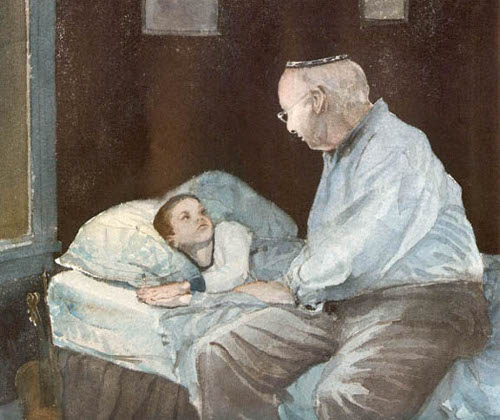

7-Imp: Speaking of picture books, would you like to weigh in on the recent New York Times article, lamenting the state of the picture book?
Rich: My completely un-researched, unsubstantiated opinion (but why hold me to a more stringent standard than the Times reporter?) is that the same number of picture books are being sold, but the reason that 99% of authors/illustrators have seen their royalty checks erode is that our siphoned-off purchases are all going to Mo Willems, whose sales (I cannot reveal my sources!) are accelerating at the exact same rate that the rest of the industry’s sales are declining. Mo is plotting a takeover of the entire kidlit world (as the below secretly-photographed drawings prove).

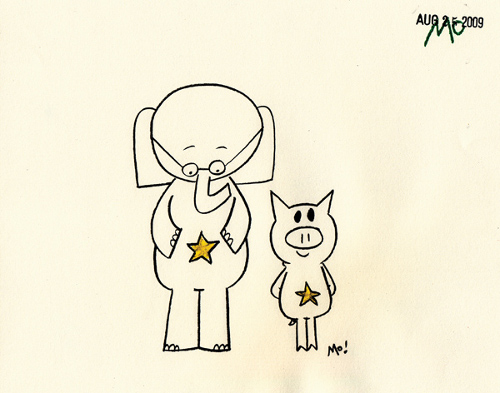
Answering from another perspective—that of someone who has been working for 30+ years to get pictures in books of all kinds, including adult books—I have to say that visual literacy is as important as verbal literacy. I’d like to see the opposite trend. Everybody should be reading picture books throughout their lives. My gallery highlights many fine press books by renowned artists like Leonard Baskin, who has collaborated with some of our greatest poets (Ted Hughes, Anthony Hecht, etc), and illustrated Shakespeare, Dante, Melville and other “adult” authors. Barry Moser has illustrated many contemporary adult novelists and poets, as well as the classics. The greatest illustrators do not just “illustrate” the words of the page, thus narrowing our imagination; they bring their own creative vision to complement and expand the text. If the whole works, it is always greater than the sum of its parts. I could go on forever about this topic and I’ve given many hour lectures at conferences, libraries and, unfortunately, cocktail parties (while my host ushers me toward the door), but I don’t want to hijack your blog.
The marketplace, of course, is a different matter entirely, but as far as I can see, to quote Clinton, “it’s the economy, stupid.” Picture books cost more than books without pictures, and everyone is watching their pennies. Library budgets are down. Technology is adding additional options for our dollars. Sure, the publishers are buying less picture book manuscripts and sometimes it seems that the quality books (i.e. books by me and my friends) are being crowded out by “literary fast food” (i.e. books by people I don’t like or don’t know), but nobody ever said life is fair or easy or static, and frankly I am always amazed at how many people do still value art — and are willing to put their money where their values are.
7-Imp: What’s up at the gallery right now?
Rich: It has been an especially busy time… We just opened two new Leonard Nimoy photography exhibitions at both Mass MoCA and the gallery (both are on view through December 31). Nimoy is giving a lecture ay Mass MoCA on Thursday, October 21st, at 5 p.m. if any New Englanders want to attend.

high-stakes game of ping pong, no less.}
Contest time: Can you name the six children’s book authors/illustrators who posed for Nimoys most recent Secret Selves project? You can see images here and here. I’ll send a signed copy of Busing Brewster or your choice of any of my earlier books to the first person to get all six names. {Ed. Note: For more information on Nimoy’s Secret Selves photography project, read here. And, if you’re interested in guessing, contact me and we’ll get your answers to Rich via email.}
Disclaimer: Local Northamptonites, friends and family (sorry, Ma), and those bloggers to whom I’ve already given the key are ineligible. (So, no, Ms. Betsy Bird, you can’t play).

{Ed. Note: Evidently, Rich has a story he sometimes tells about impersonating Nimoy’s son. I think he’ll have to visit 7-Imp again to dish on that one.}
Next up, we are already planning the details of the 21st Annual Illustration Show. The opening reception, with lots of your favorite authors/illustrators in attendance, is November 7th from 4-6. Everyone is welcome. We’ll be featuring new original works by E.B. Lewis, Mo Willems, Jules Feiffer (originals from Phantom Tollbooth will be on view, along with watercolors from Jules’ The Odious Ogre, his newest—first time in 50 years—collaboration with Norton Juster), Raul Colón, Wendell Minor (who will be receiving the 3rd Annual Norton Juster Award—from Norton Juster himself—for his contribution to children’s literacy), Jarrett Krosoczka, Mordicai Gerstein, Tony DiTerlizzi, Jane Dyer, Barry Moser, Ruth Sanderson, Scott Fischer, G. Brian Karas, Gary Lippincott (Brian and Gary both have new books with Jane Yolen, who will be in attendance as well), Eric Velasquez, and, and, and… I can keep going but easier to just send you to the group shot from last year’s show and tell you “all these folks plus more!!” And, of course, our usual selection of Dr. Seuss, Maurice Sendak, Tomie dePaola and, yes, even Eric Carle drawings are available. You can see some of the illustrations here.
(Click to enlarge photo.)
And for everyone coming to this year’s illustration exhibit, please come early. I will be speaking at the Eric Carle Museum (5 miles from the gallery) from 1 to 2 about The History of Jewish Children’s Books, in conjunction with their incredible exhibit, Monsters and Miracles: A Journey Through Jewish Picture Books. I am honored to have illustrations from four of my books represented in this exhibit.
- “Jobs were scarce and Jews were plenty” from Grandpa’s Gamble, illustrated by Barry Moser;
- “We’re walking side by side like best friends” from Across the Alley, illustrated by E.B. Lewis;
- “Learning is a sweet delight” from As Good As Anybody, illustrated by Raul Colón;
- “In my village” from Too Young for Yiddish, illustrated by Neil Waldman.
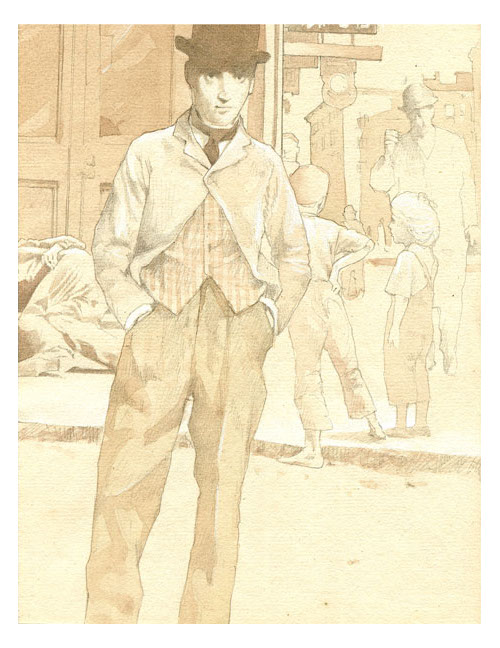
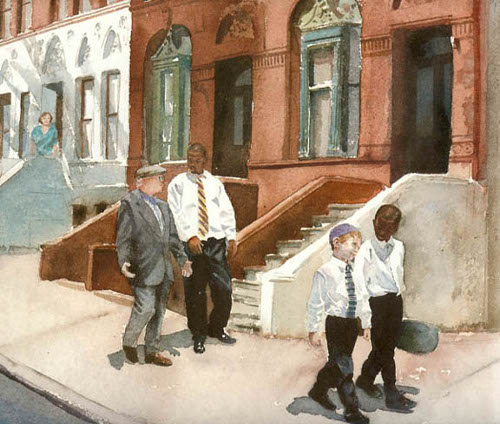

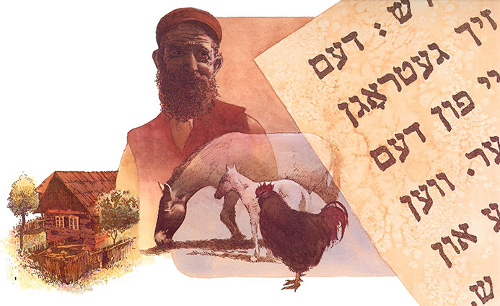
7-Imp: What are you reading now, and whom or what titles do you recommend (whether children’s literature, poetry, or otherwise?)
Rich: “Of reading books there is no end,” and the more I read, the larger my to-read pile seems to grow:
 Novels: Currently reading Gentlemen of the Road by Michael Chabon and The Frozen Rabbi by Steve Stern. Both were serialized in the past year or two; the first in the New York Times and the latter online in Tablet, but I prefer to read at my own pace, without stopping or starting as the weekly or daily publication schedule insists. So, I forced myself to skip over the magazine format and wait for book publication. Next up is The Thousand Autumns of Jacob DeZoet by David Mitchell. (His Cloud Atlas was wonderful.) Just finished Kingsolver’s The Lacuna (art, politics, history wrapped in a can’t-stop-reading story). And in my car, I am listening to Richard Russo’s That Old Cape Magic.
Novels: Currently reading Gentlemen of the Road by Michael Chabon and The Frozen Rabbi by Steve Stern. Both were serialized in the past year or two; the first in the New York Times and the latter online in Tablet, but I prefer to read at my own pace, without stopping or starting as the weekly or daily publication schedule insists. So, I forced myself to skip over the magazine format and wait for book publication. Next up is The Thousand Autumns of Jacob DeZoet by David Mitchell. (His Cloud Atlas was wonderful.) Just finished Kingsolver’s The Lacuna (art, politics, history wrapped in a can’t-stop-reading story). And in my car, I am listening to Richard Russo’s That Old Cape Magic.
Poetry: C.K. Williams has a new book out, titled Wait, that I can’t wait to spend time with. And every summer I reread Yehuda Amichai’s classic Open Closed Open. Also looking forward to the recent collected poetry of Dahlia Ravikovitch: Hovering at a Low Altitude.
Children’s Books: It is both challenging and fun to keep up with all the new books by the artists I represent, but I try to read everything—picture books, YA, MG. Recently loved Chains, Octavian Nothing, When You Reach Me, and of course, I am awaiting Mockingjay like everyone else. {Ed. Note: It took both me and Rich a while to get this interview up. Once he got to the questions, what with his busy, interesting, talented life goin’ on around him, it then took me a while to get the post ready. Of course, by this point, Mockingjay is already out on the shelves.} Plus Tony DiTerlizzi’s new Wondla – though all these illustrator/authors annoy the hell out of me. (Do you hear me, Tony?) Don’t us non-multi-talent authors have enough competition without illustrators allowed to write their own books? There oughta be a law. You should have to choose.
illustrated by Leonard Baskin, and
2006’s Oh No, Not Ghosts!, illustrated by Adam McCauley
7-Imp: Can you talk a bit about your writing “process”? Do you outline before writing or let your muse lead you to where you need to be (or both)?
Rich: I would be happy to let the muse lead me, were she/he to visit. Unfortunately, my address must be unlisted. So, I plow ahead word-by-word and line-by-line. It is a bit like building a road by laying bricks in front of myself as I walk. And each time a new line is added, I go back to the beginning and start reading all over again from the first word, until I forge on a little bit further. Fortunately, I write poetry and picture books. I could not imagine constructing a novel in this manner.
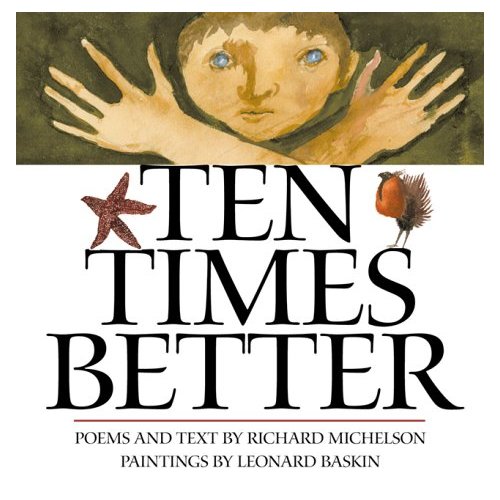
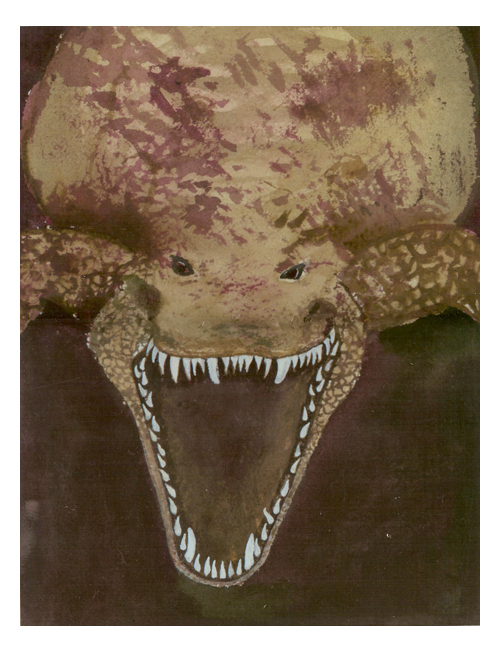
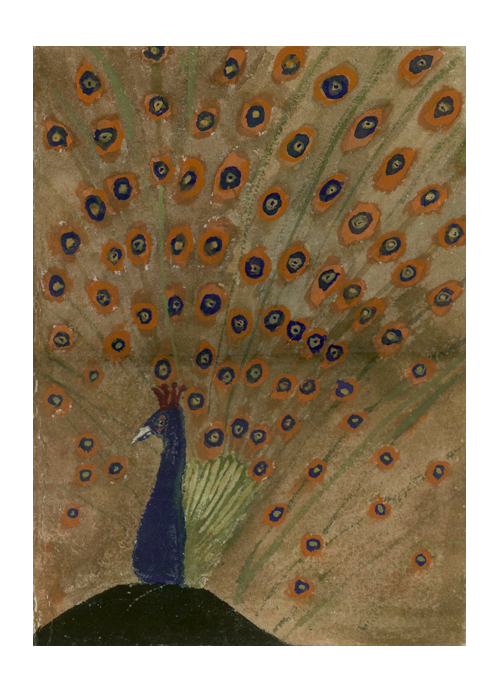
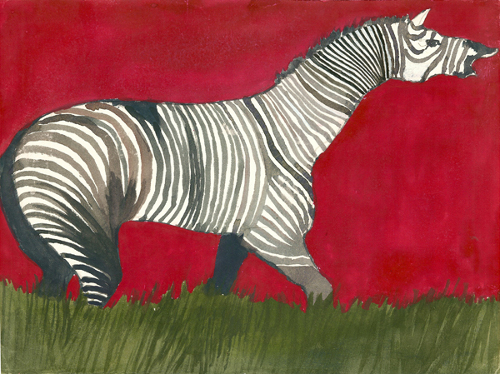
(Marshall Cavendish, 2000)
7-Imp: How do your presentations to schools, religious groups, etc. inform your writing, if at all?
Rich: Not at all (aside from the simplistic, but true, homily that reading to a group of children makes one very aware of unnecessary words and boring rhythms). Because I write for different age groups and I vary my genre, my theme is what informs my presentation, though humor works in all situations — especially when discussing serious subjects. I try to create a dialogue and, frankly, I tend to ask as many questions as I answer. I am continually amazed at how smart and complicated kids are, if you listen carefully.
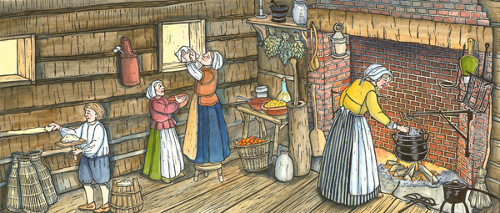

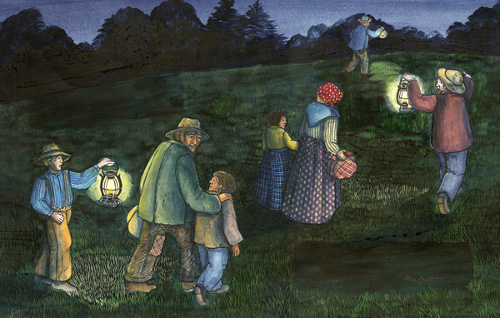
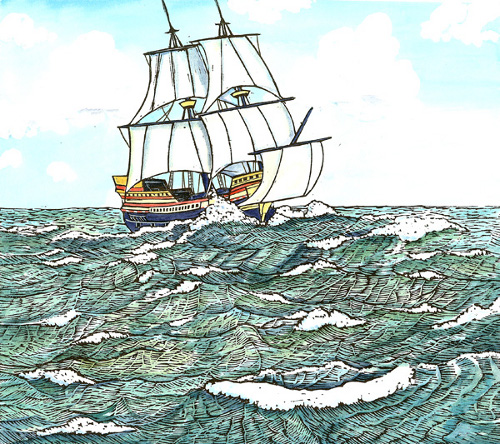
(G.P. Putnam’s Sons, 2007)
7-Imp: I know it might sound cliché, but what’s your best advice for folks wanting to write poetry for children?
Rich: And I know this might sound facile, but stop writing “for children.” Write for yourself, and be as smart, dark, funny as you can be. And, if children love it, fine. And if adults love it, fine. And if no one loves it, that is okay, too.
But, please, study your craft. It takes years. No one thinks that they can compose a sonata or play at Carnegie Hall, because they love music and their grandkids like to hear them tickle the keys. But it always amazes me that everyone thinks they can write poetry, because they have read Dr. Seuss outloud at storytime.
7-Imp: Can you give 7-Imp readers one piece of free advice from your Picture Book 101 talk?
Rich: Sure. Ready? Here it comes: Be wary of advice.
I do mean that seriously, though. Here is some advice I was given:
Write what you know. Don’t preach. Avoid alliterative animal names.
So, of course, I had to write a book where alliterative animals preached about subjects that were foreign to my own experience. As with most things in life, art is less about the idea than the execution. If two artists decide to paint a landscape from the top of Mount Skinner, one can end up with a painting for the ages, and the other can create the pictoral equivalent of a greeting card.
7-Imp: Tell me about first hearing the news about the Sydney Taylor Book Award for the wonderful As Good As Anybody.
Rich: I felt like I’d received an invitation to join a club of all the folks I’ve always wanted to be friends with. (I.B. Singer was the first award recipient, after all.) It was a wonderful validation, but mostly, in a parental sort of way, I felt less happy for myself than for my book, As Good As Anybody: Abraham Joshua Heschel and Martin Luther King’s Amazing March Towards Freedom. With so many “talented, handsome, brilliant children” out there, awards are always partly a matter of luck and timing, so any extra attention brought to this historic moment of King and Heschel’s friendship was gratifying.
The actual “Sydney Taylor call” was on Christmas Day, and I joke a bit about the unusual timing during my acceptance speech. If anyone is interested, they can listen here.
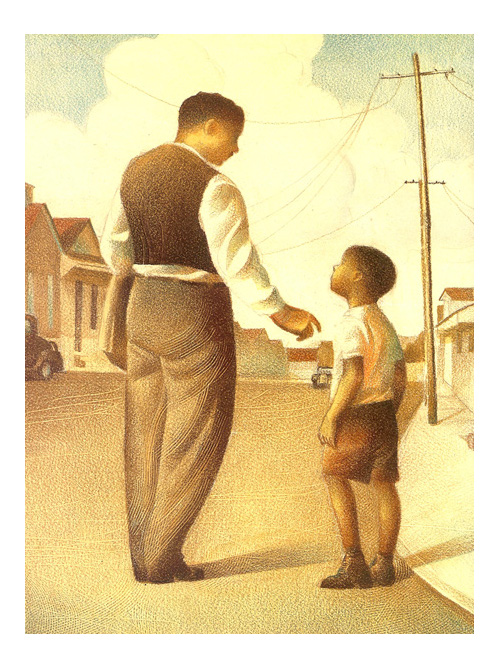
‘is not the way they always have to be…'”
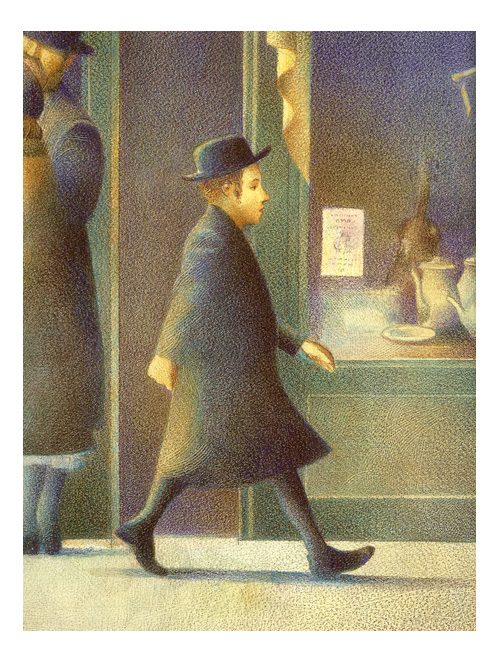
You are as good as anybody.'”

7-Imp: What’s next for you? Any poetry projects in the works right now (that you can talk about)?
Rich: I have two new picture books coming up, and by happenstance for a non-“organized sports” guy like myself, they are both sports-related:
Lipman Pike: America’s First Home Run King will be out next February. Everyone seems to have forgotten about Lip, who was—truth in titling—professional baseball’s first home run king (1871). He was also the first Jewish manager and the first ballplayer who acknowledged he was “paid to play,” thus speeding the league change from amateur to pro.

(Click to enlarge each)
Twice as Good: The Story of William Powell and Clearview, the only golf course built, designed, and owned by an African American. In keeping with my truth in titling, this is also about what it says. The wonderful Eric Velasquez is on the job.
Poetry Projects:
1). Children: A theatrical version of my 1996 poetry book for young children, Animals That Ought To Be, will be premiering in February at the Eric Carle Museum, and then it will hopefully travel on to “a local school near you.” And I have a just finished a follow-up collection, Pet Power, in my desk drawer. (Editors, please query. Limited time offer!)
2). Teen: An animated musical version of my poetry for teens, Animals Anonymous, is in the works. You can hear a sampling of the music on my site here. (Rating alert: “Bad words and bad attitude, but ultimately uplifting.”)
But never put his paw exactly on it.”
(Click to enlarge spread.)
…”When you’re as tall as a tree / You can never not see. / Were I nearer your size, / I could tell myself lies. / I could close both my eyes…”
(Click to enlarge spread.)
(Click to enlarge spread.)
3). Adult: New poems in The Harvard Review, Image, and I am finishing up a follow up to my last collection, Battles and Lullabies. {Ed. Note: Battles & Lullabies was selected by ForeWord as one of the 12 Best Books of 2006.}
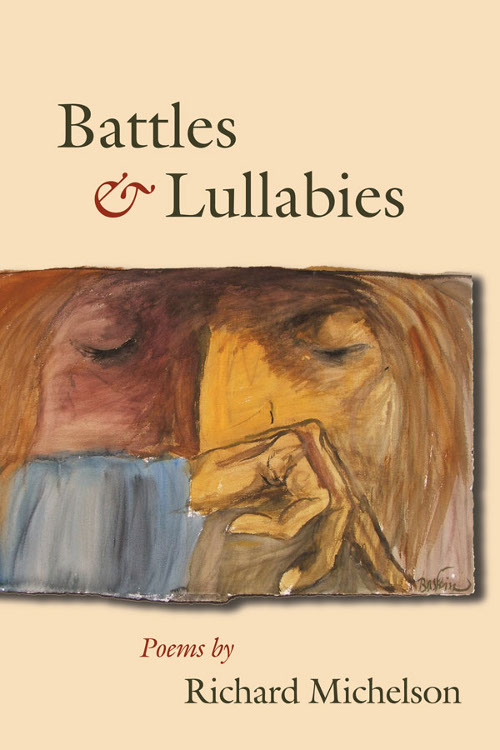
Images used with permission of Richard Michelson. All rights reserved.
Photo credit for opening photo of Richard Michelson: Seth Kaye.
Photo credit for other photo of Richard Michelson, standing: Leonard Nimoy.

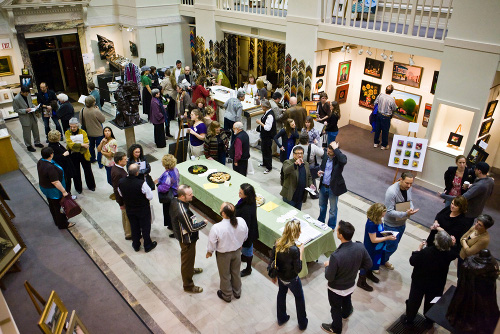

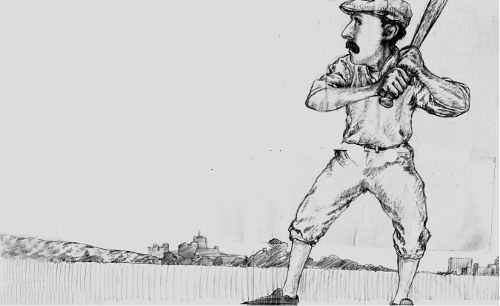
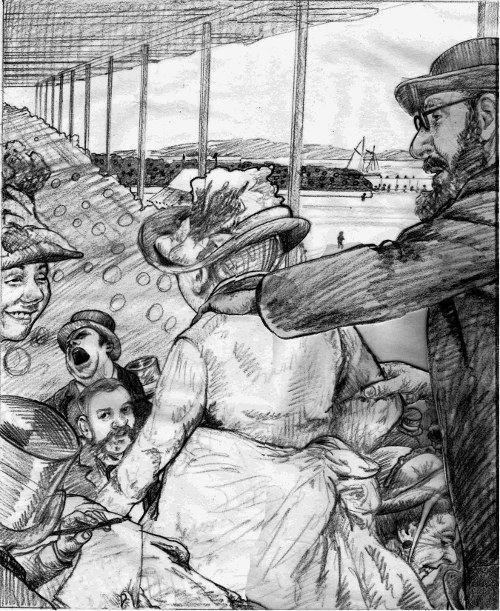
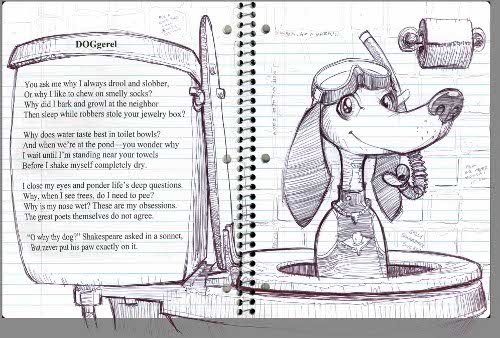
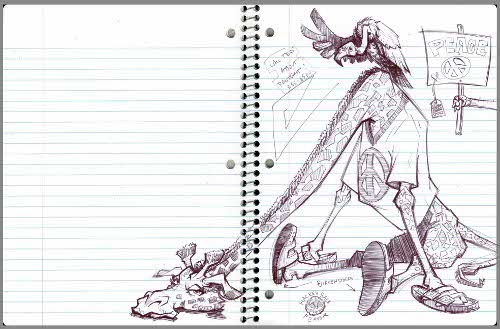


Wonderful interview with one of my favorite (local) children’s book people and I call him both a friend and my local drug dealer as I cannot get enough of the original children’s book art he sells.
Jane
Brilliant interview from start to finish! Rich is one of the most versatile and multitalented poet-authors I’ve ever had the pleasure to meet. He has become a true mentor to me.
Hooray for visual literacy!
A guy could do worse than being Withrow’s mentor and Yolen’s dealer (though I deny being either). Thank you both.
Awesome interview.! I’m looking forward to visiting your gallery. Sleeping Bear Press is very proud to be the publisher of Lipman Pike and Twice As Good.
Thanks for this, 7-imp. Thank you for introducing me to R. Michelson. What a guy! Also, I’ve suspected as much about Mo’s takeover of the industry. Curses! I LOVE ADORE ADMIRE RG Roth’s art for his new book. You’ve introduced me to him as well.
WOW! I didn’t know it was possible to like Julie & Rich any more than I already do. Fantastic interview!
Thanks Jules and Rich. That was one long breakfast, but I enjoyed every minute and now want to go pick up some of those books again.
Great interview: thorough, lively, well illustrated (vu den?), just altogether fun. Thanks for the plug for Sydney Taylor Book Award – I’ll link to the interview from AJL’s Facebook page!
Thanks everyone!
@Heather-thrilled to be working on my 2nd and 3rdh SB book (A is for Abraham was first, and Sydney Taylor Silver Medal book, so thank you to Heidi as well).
@Lara Beth– I am blushing behind the beard
@Jeannine-now that I’ve used up your breakfast hours, we should do lunch someday.
Fine interview! Thanks. Rich, I’m really glad to learn about the Mo Willems issue, hee hee.
leda
Wow. Amazing interview. I feel like I need to take several days to explore all of the links and re-read it. Such a wealth of images and ideas – I’m a bit overstimulated!
Love how he described his writing process. Mine is similar, and now I’m realizing why PBs are more natural for me than novels!
So wonderful to see a writer so passionate about illustration (and art in general)!
Thanks so much again!
Great interview! So happy to see that more people are finding out about Rich! Yeah!
I have been reading Richard Michaelson’s picture books to my daughter’s class in Lexington, MA for the past two years just before Martin Luther King day. When she was in third grade, I read Across the Alley; in fourth grade, I read As Good as Anybody, and this year I am planning to read Busing Brewster. The children simply love these books! I am a great admirer of Richard Michaelson’s writing style, and these books warm my heart and fill my eyes every time I read them. Wonderful interview on a wonderful author.
Holly S. Boker, children’s writer
Wow. I had onlly read a tiny bit of this earlier and finally came back to finish it. Fantastic interview, and I’m ashamed at how few of Rich’s books I knew. I’ll be correcting that immediately!
I am SO in agreement about those greedy author/illustrators. Talk about having your cake and eating it, too. Greedy, people. Just plain greedy:>)
[…] Dr. Seuss in his dos and don’ts advice to aspiring childrens book writers in his interview on Seven Impossible Things Before Breakfast. But my moment didn’t come from thinking ‘Surely I can rhyme like that’, it came […]
[…] poet, and gallery-owner Richard Michelson (October 19, 2010) on The New York Times declaring in October that the picture book is no longer the staple it once […]
[…] been announced, and as you can see at that link, lucky ‘ol me gets the honor of introducing Richard Michelson. This will mark the first time I get to meet him in person, too. Nice. And then I get to hear him […]
[…] from some quick glances that day, I had read earlier about the author, Richard Michelson, on Seven Impossible Things Before Breakfast. This time I vowed to get that book into my hands…and I […]
[…] caricatures” is how Publishers Weekly described Zak’s style for his illustrations in Richard Michelson’s latest picture book title, Lipman Pike: America’s First Home Run King (Sleeping Bear Press, […]
[…] uses the word “majestic.” As you can see in the illustrations below—many from Richard Michelson’s Twice as Good: The Story of William Powell and Clearview, the Only Golf Course Designed, Built, and […]
[…] at Kirkus today, I talk to author Richard Michelson, quoted above (and pictured above, with Leonard Nimoy), about Fascinating, his new picture book […]
[…] names for God.” I’m following up last week’s Kirkus Q&A with author Richard Michelson and illustrator Edel Rodriguez with a bit of Edel’s art from Fascinating: The Life of Leonard […]